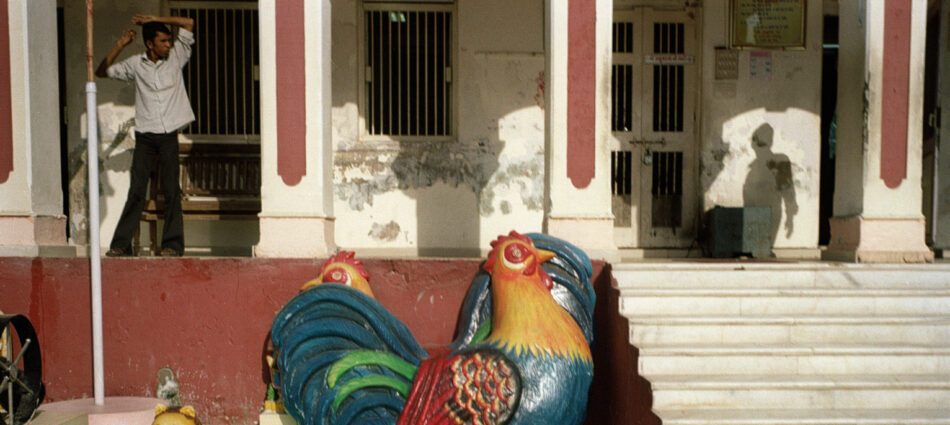
The Idea Of India Project Update: May 9th 2010: The Ideological Shadows On Somnath
Mahmud of Ghazni, a legendary looter, descended on Somnath from his Afghan kingdom and, after a two-day battle, took the town and the temple. Having stripped its fabulous wealth, he destroyed it. So began a pattern of Muslim desecration and Hindu rebuilding that continued for centuries. The temple was again razed in 1297, 1394, and finally in 1706 by Aurangzeb, the notorious Mughal fundamentalist.
India The Lonely Planet Guide 2008
Actually, it was not. In fact, there isn’t even evidence that it was really ever razed, but merely ransacked for its loot on at least one occasion. Aurengzeb’s orders were in fact never carried out. But I am getting ahead of myself.
[googlemaps http://maps.google.com/maps/ms?ie=UTF8&hl=en&msa=0&msid=104114207943904934148.000484ff19f02811d7616&ll=22.238422,71.30539&spn=4.87996,7.03125&z=7&output=embed&w=640&h=480]
Now, standing in front of the lovely temple of Somnath (no photography please, this is a sensitive site!) I find it hard to believe that it carries within it so many histories, overlapping and contradictory, and that is became the symbol not just of Muslim religious zealotry but also of a Hindu religious resistance and resilience. This beautiful temple on the thrashing shores of the Arabian Sea has become the central motif of a resurgent Hindutva movement and as it had earlier, when in the 1950s it was ceremoniously rebuilt, of Hindu Indian nationalism. In fact, the road to Ayodhya and the destruction of the Barbri mosque, began here in this small, otherwise nondescript town as L.K. Advani began a rath yatra from here to rally the people and spread the message of the powerful Hindu right movement.
As K.N. Panikkar points out in a piece called ‘The Hindutva Ride’ in India’s Frontline magazine:
The nationalism that the Ram Janmabhoomi movement invoked had greater salience with religion than with the nation. It was basically a strategy of religious mobilisation using Ram as a symbol to attract the allegiance of the believers to a political cause shrouded in religious garb. The Hindu consolidation such a mobilisation would entail was expected to ensure easy access to power. Only Ram had to be taken to the people couched in an emotional idiom, which the Sangh Parivar did through a variety of programmes associated with the construction of the temple at Ayodhya.
The most effective of them was the rath yatra from Somnath to Ayodhya led by Lal Krishna Advani. It was communal in conception, aggressive in execution and religious in appeal. As a result, violence erupted along the entire route of the yatra, in which several people were killed and injured.
I am in Somnath, and as I walk through the desperately poor Muslim neighborhoods, with their many small, decrepit mosques and shrines, that sit around the magnificent temple, I can’t help but wonder how what was once just another small temple on the western shores of Gujarat because the central, defining symbol to for medieval Islam, and in a counter-reaction, to modern Hinduism. This question I will explore in a further piece.
The story of Somnath is not as simple as that of Muslim destruction and Hindu reconstruction. It is far more interesting than that, and more subtle in its texture. It is the story of the explicit use of religion for political power and legitimacy and a determination to use ideas of religious service and duty to inspire peoples to support leaders. Whether Mahmud of Gazni or L.K. Advani, they both were inspired to surround the idea of Somnath with aims and aspirations political. And in the process they erased the actually history not just of the region, but of the incredibly complex and involved social and economic history of Gujarat that linked it closely through trade and exchange with the Arab Gulf.
The temple was attacked and ransacked. That cannot be denied. But not for reasons we think. and never for intentions we now bestow.